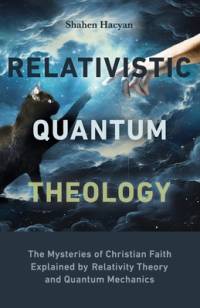Om Relativistic Quantum Theology
The theory of relativity and quantum mechanics are the cornerstones of modern physics. While the former is based on startling but clear premises, the latter lays on entirely obscure foundations. Nevertheless, these theories have provided a wonderful description of the Universe, from atomic to cosmic scales, and their union as a relativistic quantum theory has produced the most precise description of atomic phenomena ever achieved.Much has been written about the mysteries of the atomic world revealed by quantum mechanics, to such an extent that this branch of physics has overreached its original framework. Many people, after reading a popular science book or an article in the press, believe that quantum mechanics can have amazing applications to a wide variety of topics. Thus, for instance, we find all over the market: quantum meditation, quantum medicine, quantum recipes for self-improvement, quantum cosmetics (a whole line of quantum shampoos, conditioners, soaps, detergents...) and a long etcetera. On the other hand, there are no relativistic shampoos or healing methods, but the theory has inspired many science-fiction books and films.
Since, undeniably, the fundamental concepts of quantum mechanics are alien to our everyday experience, it is not surprising that some of the founding fathers of this new science -great figures such as Einstein and Schrödinger- looked for more intuitive explanations of their theoretical proposals. However, all their attempts failed. Nowadays, most physicists have resigned themselves to accepting the principles of quantum mechanics as articles of faith, since there is no doubt that this new science is successful beyond all expectations in describing the atomic world. Thus, "have faith and calculate" has become the maxim of quantum physicists. It is noteworthy that something similar is asked of believers: to have faith in the precepts and mysteries of the Church, however incomprehensible they may seem to our limited human understanding. There are mysteries, and we can find them in both the quantum and the religious worlds. In the following dialogues, two characters, Theodicius and Hylasphos, discuss about the mysteries of faith and those of quantum mechanics and relativity. Being the former a theologian and the latter a physicist, they compare the mysteries of religion with those of science and try accordingly, in just seven days of dialogue, to convey their concerns to the reader who has been patient enough to follow their arguments to the end.
Visa mer

